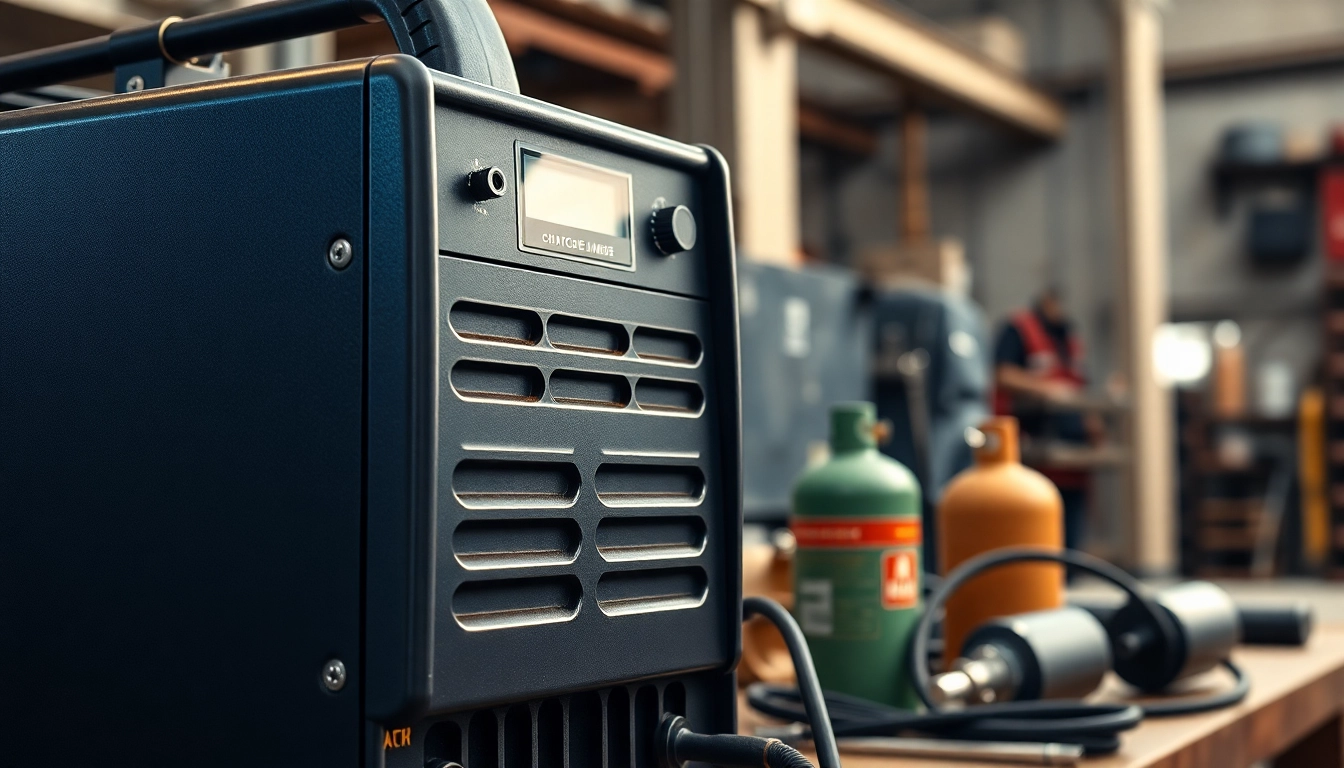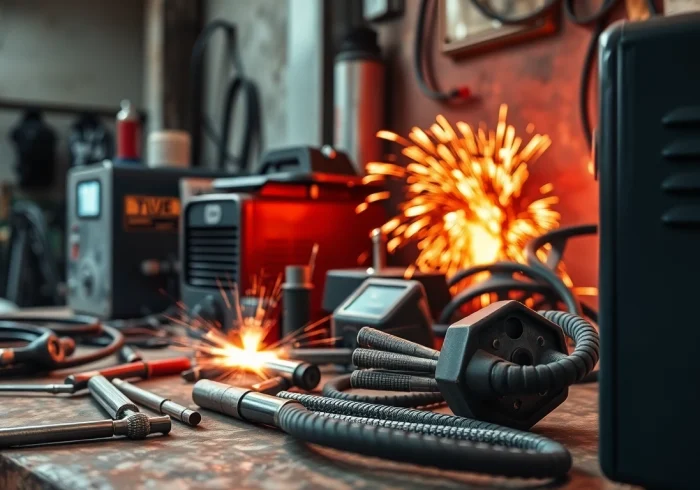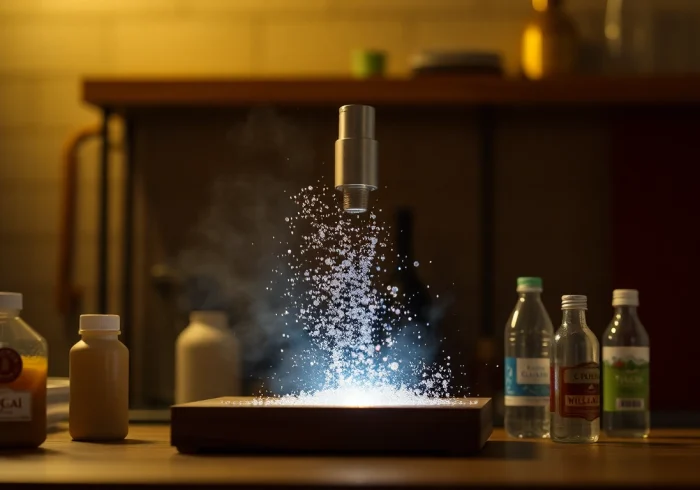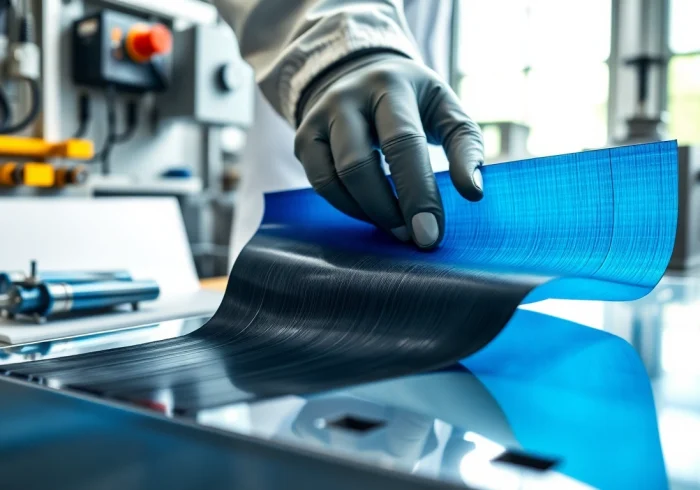Understanding AC DC TIG Welders
What is an AC DC TIG Welder?
An AC DC TIG welder is a versatile type of welding machine that uses both alternating current (AC) and direct current (DC) for the tungsten inert gas (TIG) welding process. This capability allows the welder to work on a range of materials with varying thicknesses and characteristics. The AC function is particularly suited for welding aluminum and magnesium, where it contributes to breaking away the oxide layer that can hinder the quality of the weld. On the other hand, the DC function is ideal for other metals, including steel and stainless steel, as it delivers a more stable arc and can produce deeper penetration. The flexibility of choosing between AC and DC makes these welders a popular choice among both amateur and professional welders.
Benefits of Using AC DC TIG Welders
Using an ac dc tig welder comes with several notable benefits:
- Versatility: The ability to switch between AC and DC means that users can weld a plethora of materials, accommodating projects ranging from automotive repairs to intricate artistic applications.
- Precision: TIG welding is renowned for its ability to create high-quality, fine-looking weld seams. This is crucial for applications where aesthetics are as important as structural integrity.
- Control: With features like adjustable current settings and torch angle, AC DC TIG welders give users better control over the welding process, resulting in cleaner welds.
- Clean Welding: The process generates minimal spatter, leading to less post-welding cleanup compared to other welding methods.
- Ability to Use Filler Rods: TIG welding allows for the use of filler rods, which can be critical for specific projects requiring additional material for strength or shaping.
Common Applications and Materials
AC DC TIG welders are utilized in various industries due to their adaptability:
- Manufacturing: Ideal for assembling parts made from stainless steel and other alloys, commonly found in the food processing and chemical industries.
- Aerospace: Used for welding thin-walled components and structures, where strength and precision are essential.
- Automotive: Perfect for welding aluminum components in vehicles, such as engine parts and frames.
- Fabrication: Employed in metal fabrication shops to create custom metal structures, artworks, and fixtures.
- HVAC: Commonly used for welding copper and aluminum in HVAC systems, ensuring tight, leak-proof joints.
Choosing the Right AC DC TIG Welder
Key Features to Consider
When selecting an AC DC TIG welder, it’s crucial to evaluate specific features that align with your welding needs:
- Amperage Range: The welder should have a suitable amperage range for the thickness of materials you plan to work with. For example, a 200-amp welder is adequate for most general welding tasks, but heavier applications might require a higher range.
- Portability: Depending on your workspace, consider the weight and size of the welder. Models with built-in handles and lightweight designs make for easier transportation.
- Cooling Systems: An efficient cooling mechanism helps maintain the welder’s performance over longer periods, which is essential in high-demand environments.
- Control Settings: Look for features such as adjustable AC balance control, pulse options, and foot pedals for added control over your welding technique.
- Warranty and Support: A comprehensive warranty and robust customer support can provide peace of mind and protection on your investment.
Price Ranges and Models Available
The price of AC DC TIG welders can vary significantly based on their features and capabilities. Entry-level models can begin at around $500, while high-end machines could exceed $5,000:
- Entry-Level Welders: Typically range from $500 to $1,000. These models often lack advanced features, making them ideal for hobbyists or small projects.
- Mid-Range Welders: Priced between $1,000 and $2,500, these options offer a balance of features suitable for semi-professional use.
- Professional Models: Ranging from $2,500 to $5,000 or more, these welders include advanced features and higher amperage capabilities, catering to industrial applications.
Brand Comparisons: Miller vs. Everlast
Two of the most prominent brands in the AC DC TIG welding market are Miller and Everlast. Here’s a breakdown of their strengths:
- Miller: Renowned for its robust build quality and consistency, Miller welders often come with a higher price tag. They provide excellent customer support and a comprehensive warranty, making them ideal for professional welders.
- Everlast: This brand is known for offering high-quality machines at competitive prices. Their welders often include numerous features, appealing to hobbyists and professional welders looking for value.
Setup and Safety Tips for AC DC TIG Welding
Preparing Your Workspace
Setting up your workspace for optimal performance and safety is vital in the welding process:
- Clear Area: Ensure the workspace is free from flammable materials or debris that could ignite.)
- Ventilation: Proper airflow reduces the accumulation of hazardous fumes and gases. If welding indoors, ensure there’s adequate ventilation.
- Stable Surface: Make sure your welder is placed on a firm, stable surface to prevent any vibrations or falls during operation.
Essential Safety Gear
Welders must prioritize safety by utilizing appropriate protective gear:
- Welding Helmet: A proper helmet with a suitable shade lens protects against UV light and sparks.
- Gloves: Use leather gloves specifically designed for welding to protect your hands from heat and spatter.
- Protective Clothing: Wear flame-resistant clothing, such as long sleeves and long pants, to safeguard against burns.
- Boots: Steel-toed boots provide essential foot protection from falling equipment and hot materials.
Calibration and Initial Setup
Before starting any welding project, it’s essential to calibrate your welder:
- Set Amperage: Adjust the amperage according to the material’s thickness, following guidelines from the welder’s manual.
- Adjust Gas Flow: Set the appropriate gas flow rate for shielding, typically around 15 cubic feet per hour (CFH) for TIG welding.
- Check Torch and Cable Connections: Ensure all connections are secure and free from wear or damage.
Advanced Techniques for AC DC TIG Welding
High-Performance Techniques for Aluminum
Welding aluminum requires specific techniques to ensure a strong bond:
- Use AC Power: Set your welder to AC for aluminum work to take advantage of the cleaning cycle, which removes oxides.
- Tungsten Preparation: Sharpen the tungsten electrode to a point for a more focused arc, and consider using a 2% lanthanated tungsten for better performance.
- Maintain a Consistent Travel Speed: A steady hand and consistent speed help in achieving uniform bead appearance while preventing burn-through.
Optimizing Settings for Different Metals
Maximize your welding quality by adjusting settings for various materials:
- Stainless Steel: Use DC current with a 10-15 degrees travel angle to produce a good penetration and achieve a smooth bead.
- Carbon Steel: Opt for DC with a lower amperage setting, which can help in minimizing distortion on thinner sheets.
- Other Alloys: Refer to specific guidelines for each alloy type, as different compositions may require unique settings and approaches.
Troubleshooting Common Issues
Troubleshooting welding problems promptly helps maintain quality and productivity:
- Inconsistent Arc: Check the following: Amperage settings, grounding clamp connection, and torch components.
- Excessive Spatter: Reducing the post-flow time can help minimize spattering, as can adjusting the distance between the workpiece and the tungsten electrode.
- Poor Penetration: If you notice insufficient penetration, consider increasing the amperage while ensuring your travel speed is optimal.
Maintaining Your AC DC TIG Welder
Regular Maintenance Practices
Maintaining your AC DC TIG welder is crucial for extending its lifespan and performance:
- Cleaning: Regularly clean the welding torch and collet body to prevent buildup of contaminants. Ensure the gas lens is clear for optimal gas flow.
- Inspecting Cables and Connections: Regular visual checks help identify wear and tear on cables and connections, enabling you to replace components as necessary.
- Periodic Calibration: Calibration ensures that your welder operates at peak efficiency and delivers consistent results.
Signs Your Welder Needs Repairs
Be mindful of specific indicators that suggest maintenance or repairs are needed:
- Inconsistent Welding Performance: Experiencing fluctuating weld quality may signal internal electrical issues.
- Overheating: Continual overheating can indicate that the welding machine isn’t cooling properly or is under undue stress.
- Visible Damage: Any noticeable cracks or damage to components should be addressed immediately to avoid safety hazards.
Storing Your Equipment Properly
Proper storage extends your welder’s life and helps maintain its functionality:
- Dry Environment: Store your welder in a temperature-controlled and dry location to prevent moisture-related damage.
- Protective Cover: Use a protective cover to guard against dust and debris, which can interfere with performance.
- Safe Positioning: Ensure that your welder is stored in a secure place, minimizing the risk of accidents or falls.



